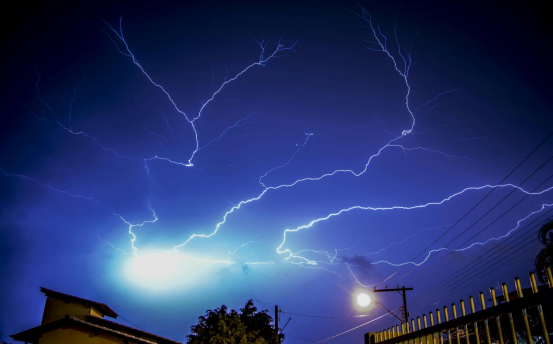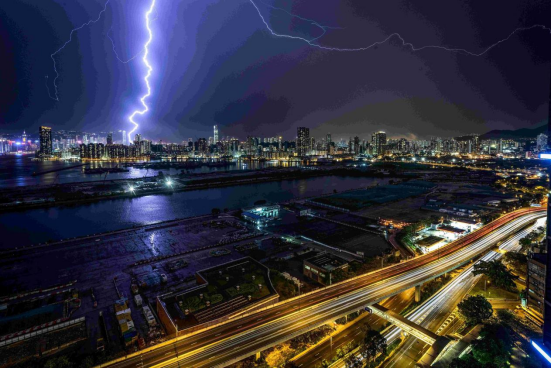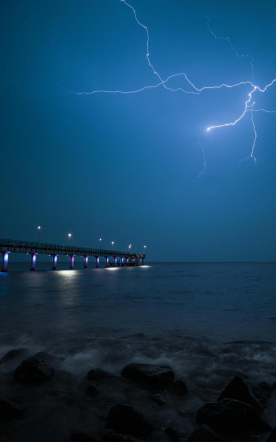Sansi LED: Sustainable LED Lighting and Integrated LED Display
Delivering premium and professional LED Display, LED Lighting, Smart City Integration solutions, trusted by over 60,000 companies worldwide everyday. From industrial lighting to commercial lighting, from outdoor advertising to XR & VR production, Sansi LED greatly improves the quality and sustainability of your business with 30 years of expert experiences.
With the rapid development of LED technology, outdoor LED lighting fixtures have gained widespread application in public spaces such as streets, squares, and parks due to their energy efficiency, long lifespan, and other advantages. However, the diversity and unpredictability of outdoor environments, especially the impact of thunderstorms, make the safety and reliability of LED fixtures a pressing concern.
Therefore, when designing outdoor LED driver units, lightning protection becomes a crucial aspect. This article explores the lightning protection design of outdoor LED driver units, helping designers enhance their products' lightning resistance, thus improving market competitiveness.

The Impact of Lightning on LED Fixtures
The impact of lightning on outdoor LED fixtures can be observed in several ways:
Direct Lightning Strikes: A direct strike to the fixture can cause damage to the fixture and even start a fire.
Inductive Lightning: Even if lightning does not directly strike the fixture, the strong electromagnetic fields can induce high voltage, damaging the driver and LED module.
Grounding Failures: Lightning can cause electrical currents to enter the fixture via the grounding loop, potentially resulting in equipment damage or electrical safety hazards.
Therefore, it is essential to consider these potential risks when designing LED driver units and to implement protective measures accordingly.
Design Approaches for Lightning Protection in Driver Units
Selection of Appropriate Lightning Protection Components
In the design of outdoor LED driver units, the following lightning protection components can be considered:
Surge Protectors: Surge protectors can effectively divert lightning currents, reducing direct impacts on the lighting fixtures. Choosing surge protectors with appropriate parameters helps maintain normal operation during lightning events.
Electrical Surge Protection Devices (SPD): SPDs can rapidly respond to sudden high voltage, limiting it to a safe range and protecting the driver and LED modules.
Surge Resistance Design: The internal design of the driver should incorporate surge resistance features to enhance voltage regulation and filtering capacity, mitigating the influence of inductive lightning.

Strengthening Grounding Design
A well-designed grounding system is one of the critical measures for lightning protection. Through effective grounding, incoming lightning currents can be diverted. Key considerations for grounding design include:
Multi-point Grounding: Introducing multi-point grounding in the fixture design helps disperse the lightning current more evenly, reducing the risk of damage.
Selecting Suitable Grounding Materials: Grounding materials should possess good electrical conductivity and corrosion resistance, with common choices including copper and galvanized steel.
Regular Inspection of the Grounding System: Ensuring the grounding system is well-connected and regularly checked can prevent safety hazards caused by poor contact.

Designing a Rational Circuit Layout
A rational circuit layout is also vital in lightning protection design. Important considerations when planning the layout include:
Avoiding High-Risk Lightning Areas: Fixtures should be installed away from dense vegetation, elevated locations, or open and exposed areas.
Minimizing Wiring Length: Reducing the length of power and signal cables decreases the likelihood of lightning induction by shortening the path.
Using Shielded Cables: Employing shielded cables can significantly reduce external electromagnetic interference and enhance the stability and safety of signal transmission.
The lightning protection design of outdoor LED driver units is a critical aspect of ensuring device safety and extending service life. By judiciously selecting lightning protection components, strengthening grounding design, and optimizing circuit layouts, the impact of lightning on LED lighting fixtures can be effectively reduced. With ongoing technological advancements, we can expect to see increasingly intelligent lightning protection designs in the future that not only enhance the safety of LED fixtures but also promote sustainable development in the lighting industry. In practical applications, designers should carefully analyze specific situations and implement appropriate lightning protection measures to ensure high performance and reliability of their products.
